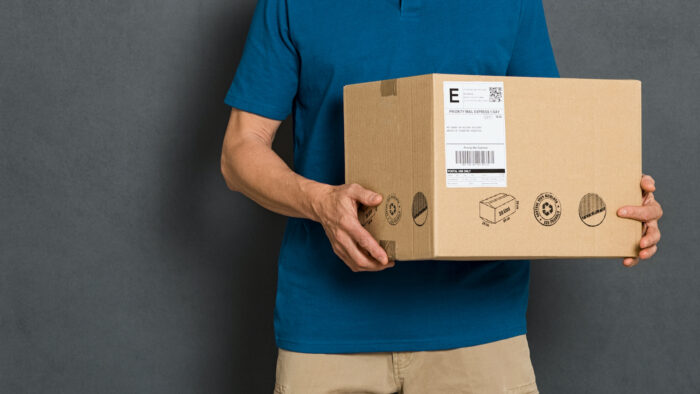What You Need to Know for Parcel Shipping to Australia?

Shipping parcels to Australia can seem daunting, especially if you’re unfamiliar with the process.
However, understanding the basics can make sending parcels to this beautiful country a breeze. This guide will provide you with the essential information you need, ensuring your parcels reach their destination safely and efficiently.
Understanding Australian Customs and Regulations
To send parcels to Australia, it’s crucial to understand the country’s customs regulations. Australia has strict biosecurity laws to protect its unique environment. Prohibited items include certain foods, plant materials, and animal products. Always check the Australian Border Force’s website for the latest information on prohibited items. Failure to comply can result in your parcel being delayed, returned, or even destroyed.
Choosing the Right Carrier
Numerous carriers offer parcel shipping services to Australia. The choice of carrier will depend on several factors, including the size and weight of your parcel, your budget, and how quickly you need it to arrive. Major international carriers like DHL, FedEx, and UPS offer reliable services but can be more expensive. Alternatively, local postal services often provide more economical options, though they may take longer.
Packaging Your Parcel Properly

Proper packaging is essential when you send a parcel to Australia. Use a sturdy box that’s the right size for your items. Fill any empty spaces with cushioning materials like bubble wrap or packing peanuts to prevent movement during transit. Seal the box securely with strong tape and label it clearly with the recipient’s address and your return address.
Completing Customs Declarations
All parcels sent to Australia require a customs declaration. This document provides details about the contents of your parcel, including their value. Be honest and accurate in your declaration. Under-declaring the value of items or failing to declare prohibited items can lead to penalties. Attach the completed declaration form securely to the outside of your parcel.
Understanding Shipping Costs and Delivery Times
Shipping costs to Australia vary based on the size and weight of your parcel, as well as the shipping speed you choose. Carriers often offer a range of options, from economy services for non-urgent deliveries to express services for time-sensitive shipments. Delivery times can range from a few days to several weeks, depending on the service and the parcel’s origin.
Tracking Your Parcel
Most carriers offer tracking services, allowing you to monitor your parcel’s journey to Australia. Tracking provides peace of mind and helps you anticipate any delays or issues. Keep the tracking number provided by your carrier, and share it with the recipient so they can also track the parcel’s progress.
Dealing with Potential Delays and Issues
Delays can occur due to various reasons, including customs processing, weather conditions, and logistical challenges. Stay informed about the status of your parcel through tracking, and contact the carrier if there are significant delays. In the event of lost or damaged parcels, most carriers offer some form of compensation or insurance. Be sure to understand your carrier’s policy when you send your parcel.
Tips for Sending Parcels Efficiently
- Plan, especially during peak periods like holidays.
- Check for any country-specific restrictions or additional requirements.
- Consider insurance for valuable items.
- Keep receipts and documentation for reference.
Leveraging Technology for Smooth Shipping
In today’s digital age, leveraging technology can greatly enhance your parcel shipping experience to Australia. Most carriers offer online tools for various aspects of the shipping process. You can get quotes, print shipping labels, complete customs declarations, and schedule pickups all from your computer or smartphone. Utilizing these tools not only saves time but also reduces the likelihood of errors in your shipping process.
Understanding Insurance and Liability
When you send a parcel to Australia, considering insurance and liability is critical. While carriers generally take great care in handling parcels, accidents and unforeseen circumstances can happen. Understand the terms of coverage offered by your carrier, including the limits of liability and the process for making a claim. For high-value items, purchasing additional insurance might be a wise decision to protect against loss or damage.
Navigating Customs Duties and Taxes
One aspect that often confuses shippers is the imposition of customs duties and taxes on parcels entering Australia. The Australian government may levy these charges based on the value and nature of the items shipped. It’s important to inform the recipient that they might be responsible for paying these fees upon delivery. Some carriers offer a Delivery Duty Paid (DDP) service, where you can pay these fees upfront to avoid any inconvenience to the recipient.
Environmentally Friendly Shipping Practices
With growing environmental concerns, adopting eco-friendly shipping practices is becoming increasingly important. You can contribute to this by using recyclable or biodegradable packaging materials. Some carriers also offer carbon-neutral shipping options, where they offset the carbon emissions of your parcel’s transport. Opting for these services not only benefits the environment but also reflects positively on your commitment to sustainable practices.
Communicating with Your Recipient

Effective communication with your recipient in Australia can significantly smooth out the shipping process. Inform them about the expected delivery date, tracking information, and any actions they might need to take, like paying customs duties. This proactive communication can prevent misunderstandings and ensure that the recipient is prepared to receive the parcel.
Staying Informed About Changes and Updates
Regulations, customs requirements, and shipping options can change over time. To ensure a hassle-free experience every time you send a parcel to Australia, stay informed about the latest updates. Regularly check the websites of your chosen carriers and the Australian Border Force for any new information or changes in regulations.
Final Thoughts
Shipping parcels to Australia doesn’t have to be a complex task. With a clear understanding of the process, proper preparation, and the right choices, you can ensure your shipments are successful and stress-free. Remember, each parcel you send is not just a package but a connection between you and the recipient, bridging distances with care and commitment.

